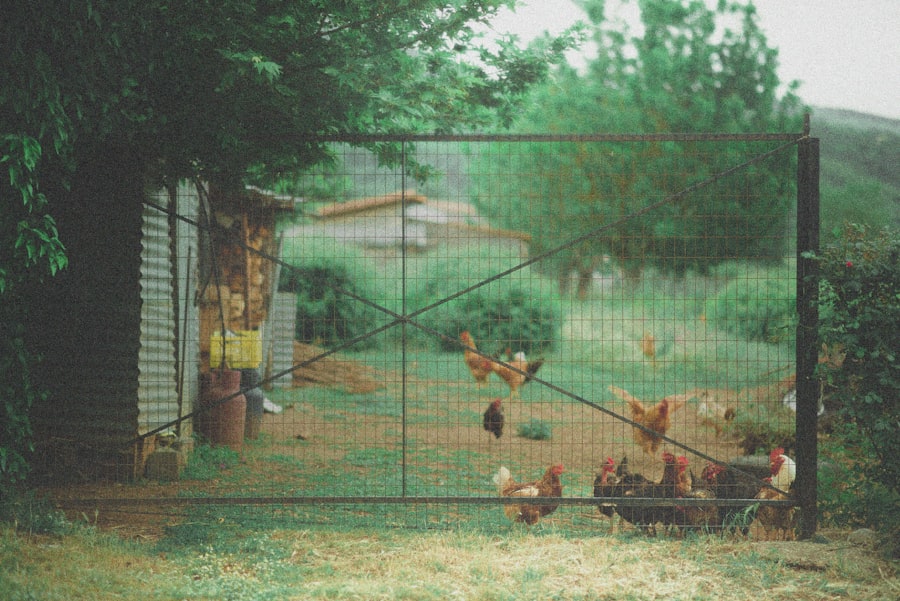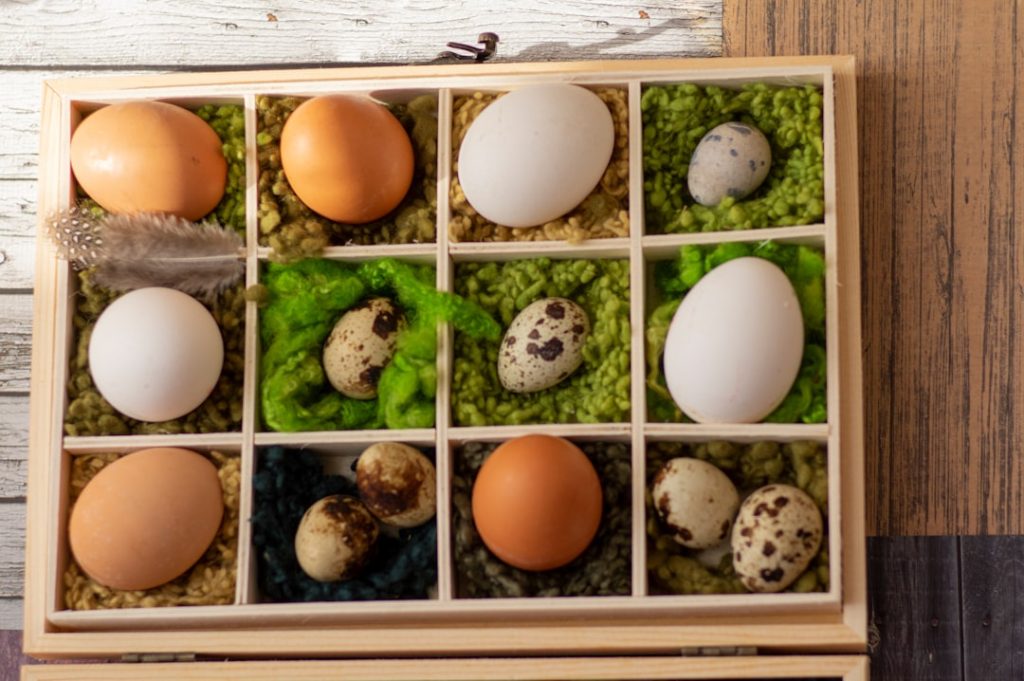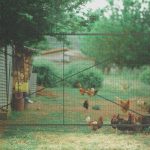When establishing a backyard chicken flock, several initial costs must be considered. A primary expense is the chicken coop, which should provide 2-3 square feet of space per bird. The coop’s size depends on the number of chickens planned.
Essential equipment includes waterers and feeders, as well as bedding material for the coop. The cost of purchasing chickens varies based on breed and age. Predator protection, such as fencing, is another necessary expense.
Additional startup costs include various supplies for the chickens. These may encompass feeders, waterers, and nesting boxes, along with bedding material. A significant ongoing expense is chicken feed, with prices varying by type and brand.
While these initial costs can accumulate rapidly, careful planning and budgeting can make them manageable. Many chicken keepers find that the long-term benefits outweigh these initial investments.
Table of Contents
Key Takeaways
- Initial Costs:
- Initial costs include purchasing chickens, a coop, feeders, waterers, and bedding.
- Additional costs may include fencing, lighting, and heating equipment.
- Feed and Supplies:
- Ongoing expenses include feed, bedding, and supplies such as waterers and feeders.
- Costs can vary based on the number of chickens and their dietary needs.
- Coop and Run Maintenance:
- Regular maintenance includes cleaning the coop, replacing bedding, and ensuring the run is secure.
- Repairs and upgrades may be necessary over time, adding to maintenance costs.
- Health Care and Medication:
- Health care costs may include vaccinations, deworming, and treating common ailments.
- Medications and supplements may also be needed, adding to health care expenses.
- Egg Production:
- Egg production can offset costs by providing a valuable food source.
- Factors such as breed, age, and diet can impact egg production and overall value.
- Long-term Expenses:
- Long-term expenses may include replacing equipment, upgrading the coop, and addressing aging chickens.
- Planning for long-term expenses is important for sustainable chicken keeping.
- Cost-saving Tips:
- Buying feed in bulk can save money over time.
- Utilizing DIY solutions for coop and run maintenance can reduce costs.
- Researching and investing in low-maintenance chicken breeds can save on long-term expenses.
Feed and Supplies
High-Quality Feed for Optimal Health
Once you’ve established your backyard chicken flock, one of the most significant ongoing expenses will be feed. Chickens require a balanced diet to stay healthy and produce eggs, so investing in high-quality feed is essential. This can include a mix of grains, protein, and essential nutrients to keep your flock in top condition.
Regular Supplies and Maintenance
In addition to feed, you’ll need to regularly purchase bedding material for the coop, as well as supplies such as waterers and feeders to ensure your chickens have access to clean water and food at all times. Regular maintenance for your chicken coop and run is also crucial, including cleaning and disinfecting the coop, as well as repairing any wear and tear that may occur over time.
The Importance of Proper Maintenance
Investing in proper maintenance will not only keep your chickens healthy and happy but also extend the life of your coop and run, saving you money in the long run. By budgeting for these ongoing expenses, you can ensure that your backyard chicken flock remains well-cared for and productive.
Coop and Run Maintenance

Maintaining a clean and well-kept coop and run is essential for the health and well-being of your backyard chicken flock. Regular maintenance tasks can include cleaning out the coop, replacing bedding material, and ensuring that waterers and feeders are kept clean and free of debris. Additionally, it’s important to regularly inspect the coop and run for any signs of wear and tear, such as loose boards or damaged fencing, and make repairs as needed.
By staying on top of regular maintenance, you can prevent costly repairs down the line and ensure that your chickens have a safe and comfortable living environment. In addition to regular cleaning and upkeep, it’s important to consider the cost of any necessary upgrades or improvements to your coop and run. This can include adding additional roosting space or nesting boxes as your flock grows, as well as investing in predator-proofing measures such as secure fencing or hardware cloth.
While these upgrades may require an initial investment, they can ultimately save you money by preventing potential losses due to predators or other hazards. By budgeting for regular maintenance and necessary upgrades, you can ensure that your backyard chicken flock remains healthy and secure for years to come.
Health Care and Medication
Just like any other pet or livestock animal, chickens require regular health care to stay in top condition. This can include routine vaccinations and deworming treatments to prevent common illnesses and parasites. Additionally, it’s important to budget for any necessary medications or veterinary care that may be required if your chickens become ill or injured.
By staying proactive with your chickens’ health care needs, you can prevent costly medical expenses down the line and ensure that your flock remains healthy and productive. In addition to routine health care, it’s important to consider the cost of any necessary medications or supplements that may be required to keep your chickens in top condition. This can include items such as poultry vitamins or electrolytes, which can help support your chickens’ immune systems and overall well-being.
By investing in preventative health care measures and staying proactive with your chickens’ health needs, you can minimize the risk of costly medical expenses and keep your backyard chicken flock thriving for years to come.
Egg Production
One of the main benefits of keeping a backyard chicken flock is the regular production of fresh eggs. However, it’s important to consider the cost of egg production when budgeting for your flock. This can include the ongoing expense of feed and supplies, as well as any necessary investments in nesting boxes or other egg-laying accommodations.
Additionally, it’s important to factor in the cost of regular egg collection and storage, as well as any necessary cleaning or packaging supplies if you plan to sell or share your eggs with others. In addition to the cost of egg production, it’s important to consider the potential savings that come with producing your own eggs at home. By raising your own chickens, you can reduce or eliminate the need to purchase eggs from the store, saving you money in the long run.
Additionally, you’ll have access to fresh, high-quality eggs that are free from hormones or other additives commonly found in commercial eggs. By factoring in both the cost of egg production and the potential savings, you can make informed decisions about raising a backyard chicken flock.
Long-term Expenses

Planning for Equipment Replacement and Repairs
In addition to ongoing costs such as feed and supplies, it’s essential to consider long-term expenses when budgeting for a backyard chicken flock. This includes potential costs such as replacing aging equipment or making necessary repairs to the coop and run over time. Additionally, it’s crucial to factor in any potential changes in your flock size or needs, such as adding new chickens or making upgrades to accommodate a growing flock.
Ensuring Sustainability and Care for Years to Come
By planning for long-term expenses, you can ensure that your backyard chicken flock remains well-cared for and sustainable for years to come. This forward thinking will allow you to provide the best possible care for your chickens, even as their needs change over time.
End-of-Life Care and Medical Expenses
Another long-term expense to consider is the potential cost of end-of-life care for your chickens. While it’s never easy to think about, it’s essential to plan for potential medical expenses or other needs that may arise as your chickens age. By factoring in these long-term expenses, you can ensure that your backyard chicken flock receives the care and support they need throughout their lives.
Cost-saving Tips
While there are several expenses associated with raising a backyard chicken flock, there are also many ways to save money along the way. One cost-saving tip is to purchase feed in bulk, which can often be more affordable than buying smaller quantities. Additionally, consider growing your own chicken feed or supplementing their diet with kitchen scraps or garden produce to reduce feed costs.
Another way to save money is by making your own DIY chicken coop and run upgrades or repairs rather than purchasing pre-made items. Another cost-saving tip is to invest in preventative health care measures for your chickens, such as routine vaccinations and deworming treatments, which can help prevent costly medical expenses down the line. Additionally, consider joining a local poultry club or online community where you can share resources and knowledge with other chicken keepers, which can help save money on supplies and equipment through group purchases or trades.
By implementing these cost-saving tips and staying proactive with your budgeting and planning, you can ensure that your backyard chicken flock remains healthy and sustainable for years to come.
If you’re considering keeping chickens for eggs, you may also be interested in learning about different types of chicken coops. Poultry Wizard has a helpful article on the best chicken coops for your backyard, including the Producers Pride Sentinel Chicken Coop. Check it out here.
FAQs
What are the initial costs of keeping chickens for eggs?
The initial costs of keeping chickens for eggs include purchasing the chickens, a coop, feeders, waterers, bedding, and other necessary equipment. The total initial cost can vary depending on the number of chickens and the quality of the equipment purchased.
What are the ongoing costs of keeping chickens for eggs?
The ongoing costs of keeping chickens for eggs include the cost of feed, bedding, healthcare, and any necessary repairs or maintenance for the coop and equipment. The monthly cost can vary depending on the number of chickens and the quality of feed and bedding used.
How much does chicken feed cost?
The cost of chicken feed can vary depending on the type and quality of feed purchased. On average, a laying hen will consume about 1/4 to 1/3 pound of feed per day. The cost of feed can range from $15 to $30 per 50-pound bag, depending on the brand and quality.
What are the healthcare costs for chickens?
Healthcare costs for chickens may include vaccinations, deworming, and treatment for common ailments such as mites or respiratory infections. The cost of healthcare can vary depending on the specific needs of the flock and the availability of veterinary services in the area.
Are there any other costs associated with keeping chickens for eggs?
Other potential costs associated with keeping chickens for eggs may include the cost of heating the coop in colder climates, predator-proofing the coop and run, and any additional equipment or supplies needed for the chickens’ well-being.
Meet Walter, the feathered-friend fanatic of Florida! Nestled in the sunshine state, Walter struts through life with his feathered companions, clucking his way to happiness. With a coop that’s fancier than a five-star hotel, he’s the Don Juan of the chicken world. When he’s not teaching his hens to do the cha-cha, you’ll find him in a heated debate with his prized rooster, Sir Clucks-a-Lot. Walter’s poultry passion is no yolk; he’s the sunny-side-up guy you never knew you needed in your flock of friends!







